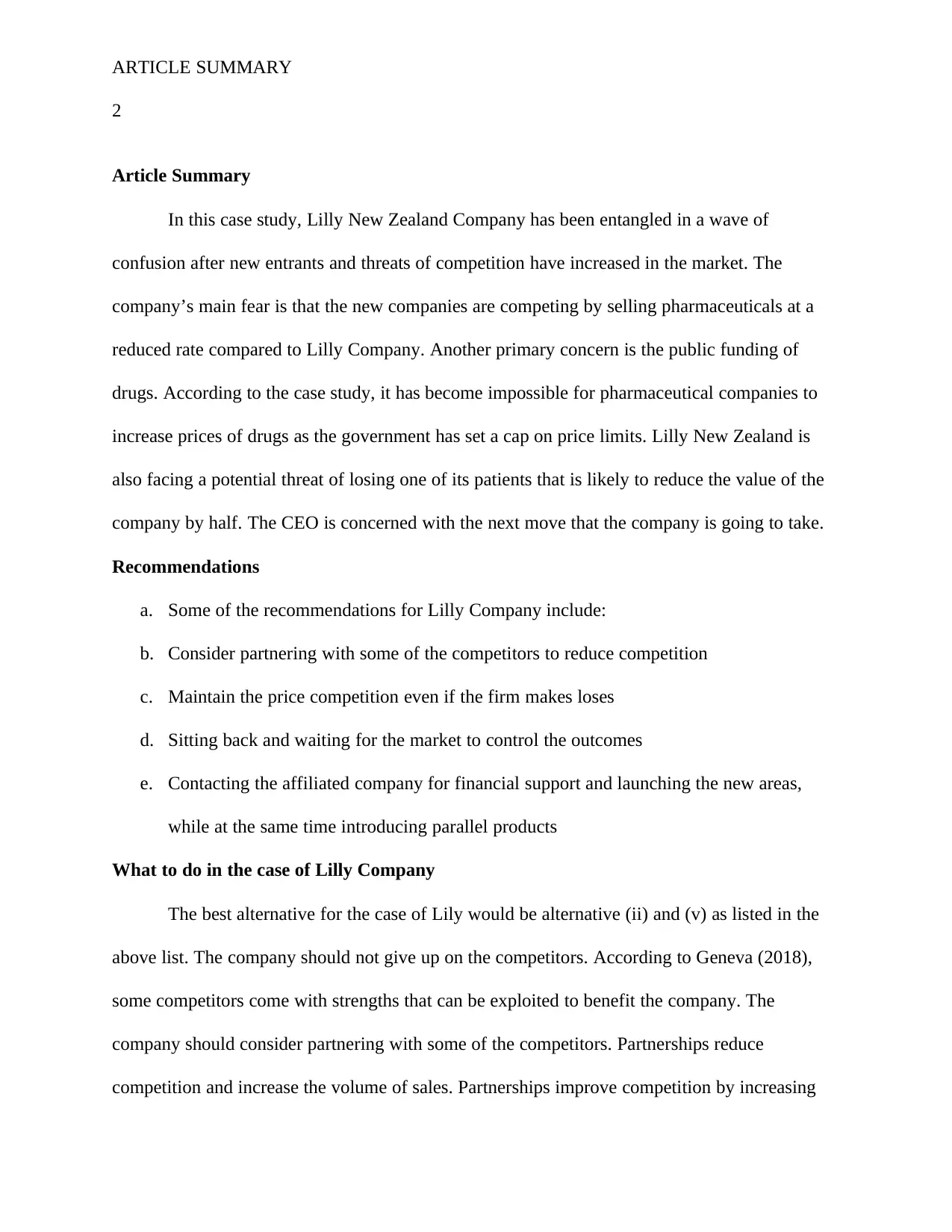Lilly New Zealand Case Study: Adapting to Market Dynamics and Threats
VerifiedAdded on 2023/04/23
|4
|469
|118
Case Study
AI Summary
This case study delves into the challenges faced by Lilly New Zealand due to increased market competition and public funding constraints. The company is grappling with declining sales due to new entrants offering pharmaceuticals at reduced rates and the potential loss of a significant patient. The CEO is seeking viable strategies to navigate these challenges. The analysis recommends that Lilly consider partnering with competitors to reduce competition and focus on expanding into new markets rather than solely focusing on price wars. Capitalizing on opportunities presented by changes in the New Zealand healthcare market, such as increased public funding, is also advised. The study suggests that by forging partnerships and expanding its market presence, Lilly can overcome competitive pressures and secure its future in the evolving healthcare landscape. Desklib provides students access to similar solved assignments and past papers.
1 out of 4











![[object Object]](/_next/static/media/star-bottom.7253800d.svg)